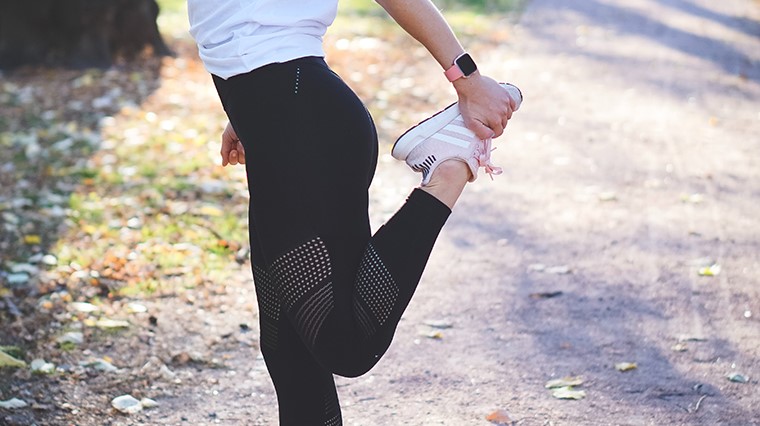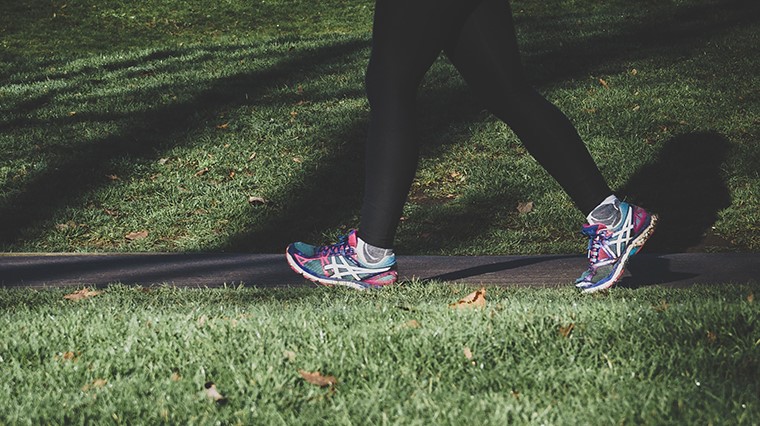12 Easy Hacks To Deal With Discomfort On Your Runs

Running hurts. We won’t go as far as saying that pain is progress, but every new challenge to your body will cause a degree of discomfort as you adapt to the next level of intensity.
You may enjoy the grit-building process, to feel the burn on your uphill runs or as you quicken your pace and strive for more distance.
However, if you find running aches and niggles to be a nuisance instead of a badge of honour, the following hacks will send your discomfort running and keep you motivated and on track of your fitness goals.
Preparation is prevention
Warm-up with dynamic ‘active’ stretches like squating, lunges and jumping jacks to improve the flexibility of muscles pre-workout and reduce your risk of annoying niggles on the run.
Fuel appropriately with a nutritious, easily digestible meal 2-3 hours prior to putting foot to pavement, helping to avoid cramping by not eating too close to your run. Drink water before, during and post-run to keep in top form, avoiding headaches and dehydration.
Increase mileage and intensity gradually

Whether you're a new runner or making a comeback to running after injury or other life commitments, your body must be given the opportunity to adapt to increased stresses.
After a long stationary period, it may be necessary to leave your ego off the track - walking before you run, then alternating between running and walking in a gradual progression towards improved endurance and speed.
Reaching too far or fast too soon will put you at higher risk of injury, so it's OK to stick to your comfort zone of 'tolerable discomfort' until you're more confident in your body and abilities. But don't allow minor discomfort to stagnate your running journey. Instead...
Train your body to expect and accept discomfort
Know that the discomfort you experience today, will be less of an obstacle tomorrow. With perseverance, both your mind and body are able to adapt to new challenges.
Wear compression gear

Compression tights and compression sleeves provide a skin-hugging fit, minimising muscle vibration to better tolerate repetitive impacts and reduce fatigue.
By constricting blood vessels and thus improving blood circulation, compression gear allows oxygen-rich blood to travel faster to fuel hard-working muscles. This in turn improves performance, reduces your injury risk and speeds up recovery time.
Body scan from head-to-toe
Could you be breathing better or running with a straighter posture? Minor tweaks to your running form may be all that’s needed to lighten your discomfort.
Assess your posture from head-to-toe, keeping these proper running form and proper breathing tips in mind.
This too shall pass (and other mantras)

They say running is 90% mental. A positive mantra can give you an edge to push past discomfort – besides, it’s only temporary! 'This too shall pass', 'I can do this' or *insert-motivational-mantra-here* will help you focus on your performance, not on minor aches and sores.
Stick to it and you may begin to associate running discomfort as ‘good pain’, and your upbeat mantra will resurface like second nature as needed.
Distraction

Distract yourself for long enough and discomfort will fade into the background, allowing your body to run on autopilot. Distraction can take many forms – whether you love to listen to uptempo tunes on-the-run with sports headphones, count your strides up to 10 and repeat, or any way of zoning out and finding your runner’s zen.
Make a conscious effort to look forward, not down. Looking down can trap you in a tunnel-vision of your discomfort. Instead, observe your surroundings and let your thoughts flow – what can you see, hear, feel?
Recruit a running buddy

Whether your running with a four-legged pal or competing with friends in a virtual step count challenge, having a fitness tribe in one form or another provides a motivational pick-me-up to sweep away discomfort and focus on keeping up the pace.
Break it up
Break your runs into segments. Focus on a visual anchor in the distance – a lamppost, mailbox or whatever it may be, and tell yourself you can slow down once you reach it.
This will help break your training route up into manageable portions and allow you to fight through mild discomfort. You may even feel comfortable maintaining your pace after reaching your 'checkpoint' and simply needed a motivational boost to keep it up.
Take walking breaks

Sometimes all it takes to ease discomfort is to ease off the pace. Take walking breaks even before fatigue and discomfort set in to allow your running muscles such as the calf to recover and prevent pain in the long haul.
Walking and running act on your body and muscles differently. Walking is not only lower intensity to provide relief from repetitive impact stresses, but uses your muscles in different ways to reduce your risk of overuse injuries.
Refuel and rehydrate
For endurance runs, energy gels provide a convenient source of nutrition, delivering an easily digestible source of carbs in a small package to replenish your energy and ward off fatigue.
Staying hydrated at all stages of your run will help ward off headaches and lubricate joints, reducing your injury risk. A nutritional sports drink has the added benefits of both hydrating and replenishing electrolytes lost in sweat - but don't pair it with energy gels as ingesting too much simple sugars too quickly may put you at risk of stomach distress.
Refuel with a nutritious meal within 20 minutes of your sweat session by reaching for muscle-building protein and energy-rich carbs to jumpstart your body into repair and recovery mode.
Recover

Your body has worked hard – now to relax and rejuvenate. Gradually transition from an active to non-active state by walking after your runs and performing light ‘static’ stretches to cool-down effectively.
Treat yourself to massage and recovery tools like a foam roller to smooth out muscle knots and areas of tension to fight off discomfort.
Happy running!
